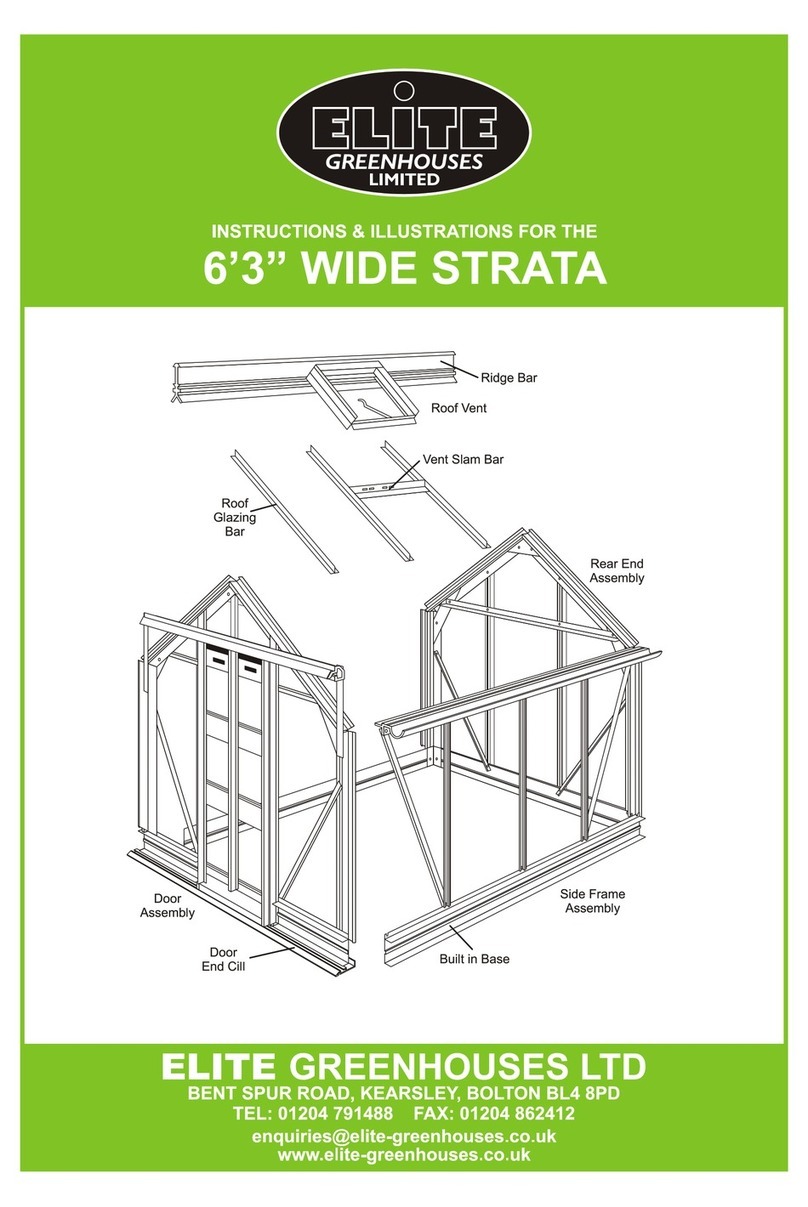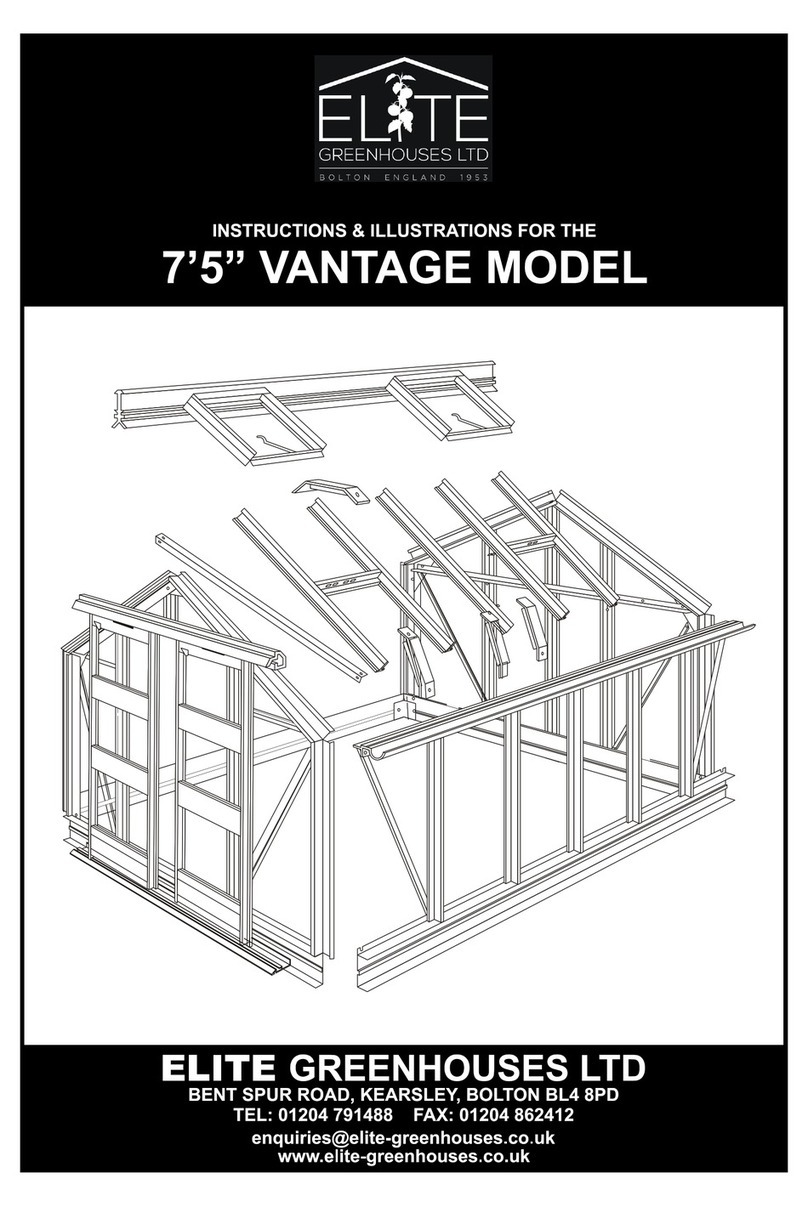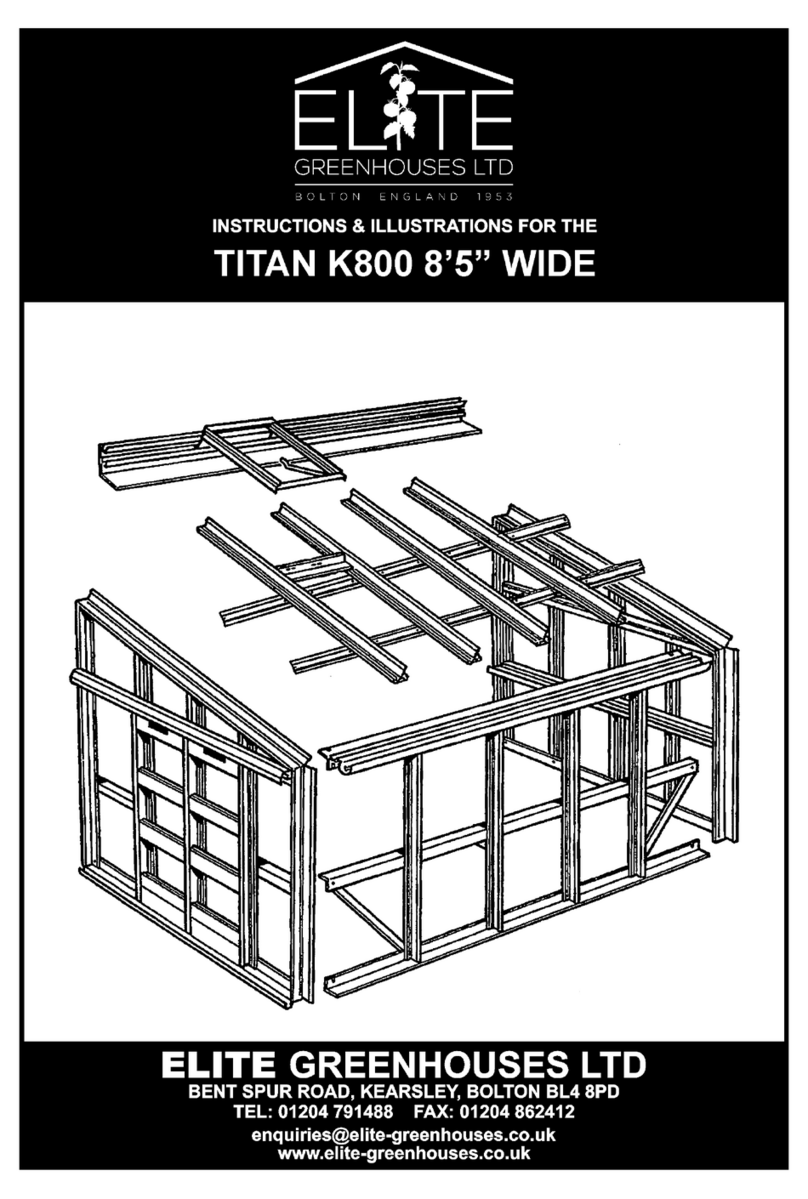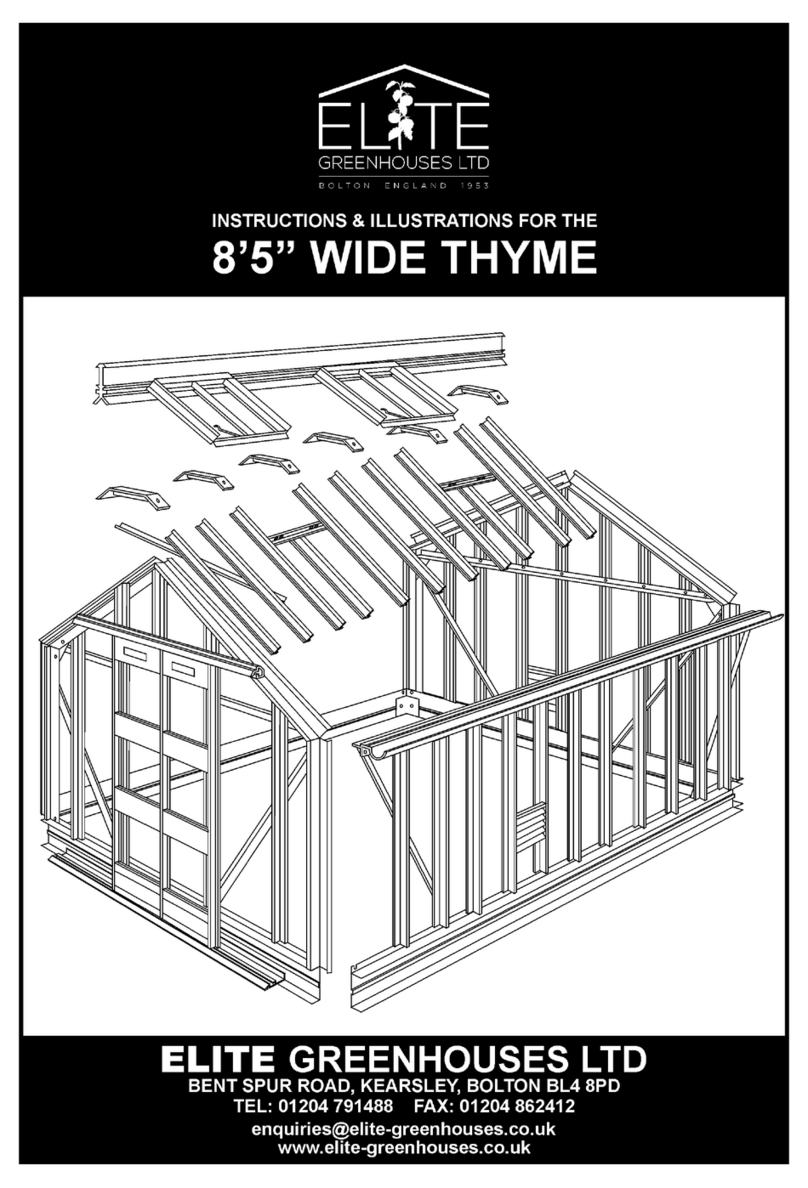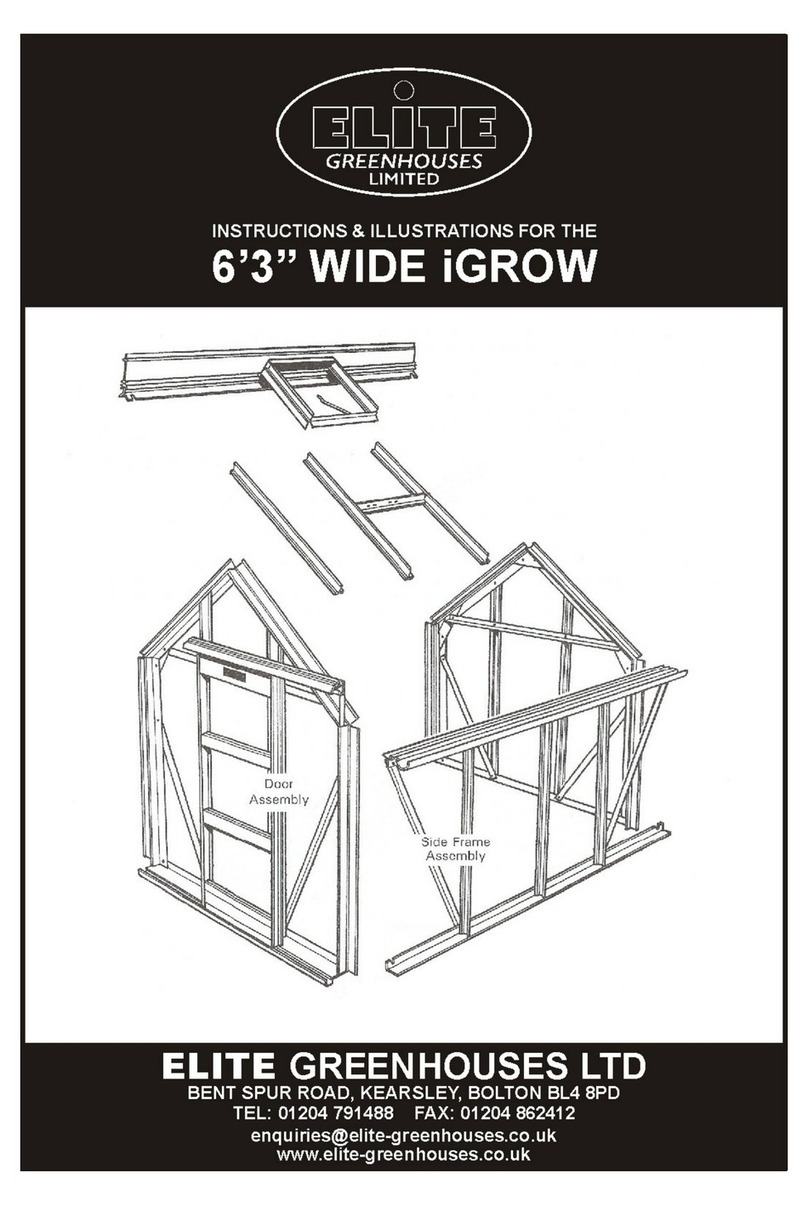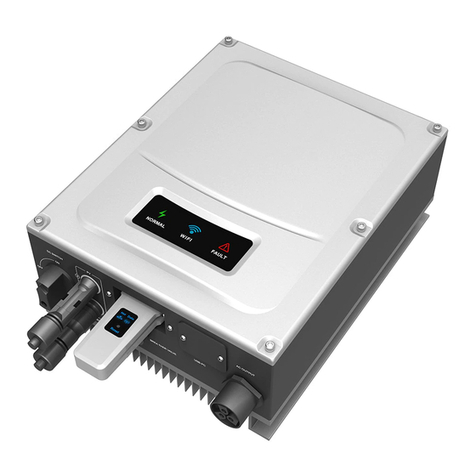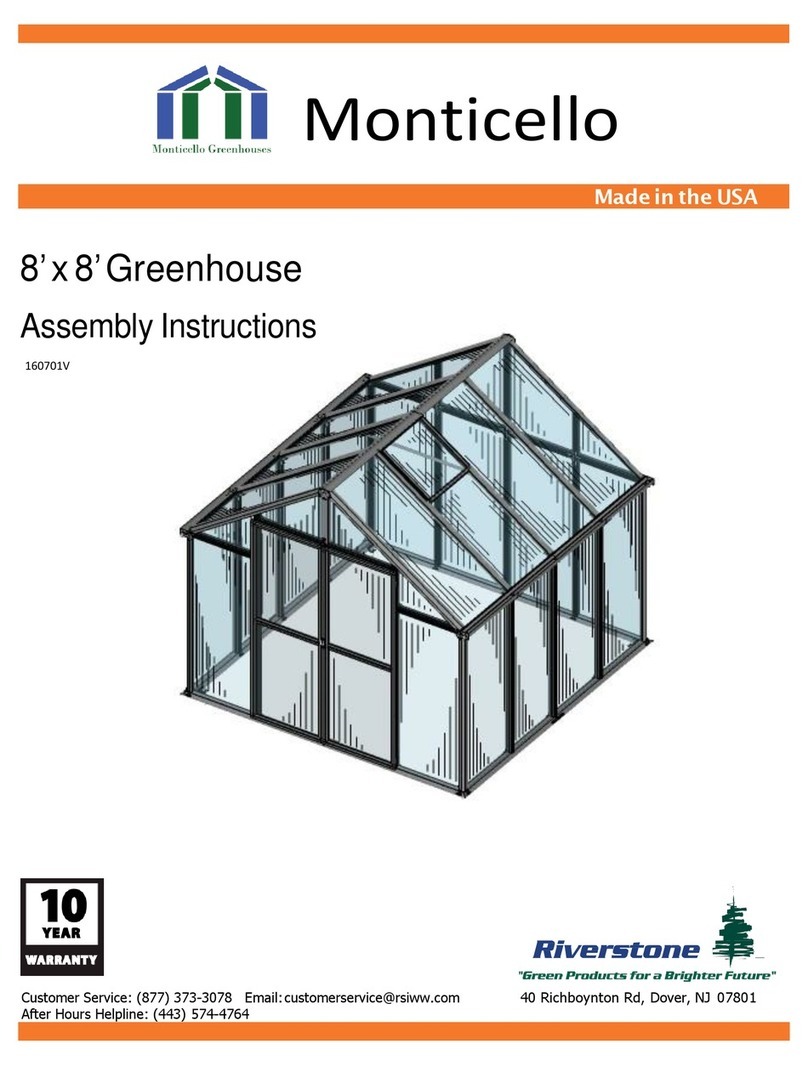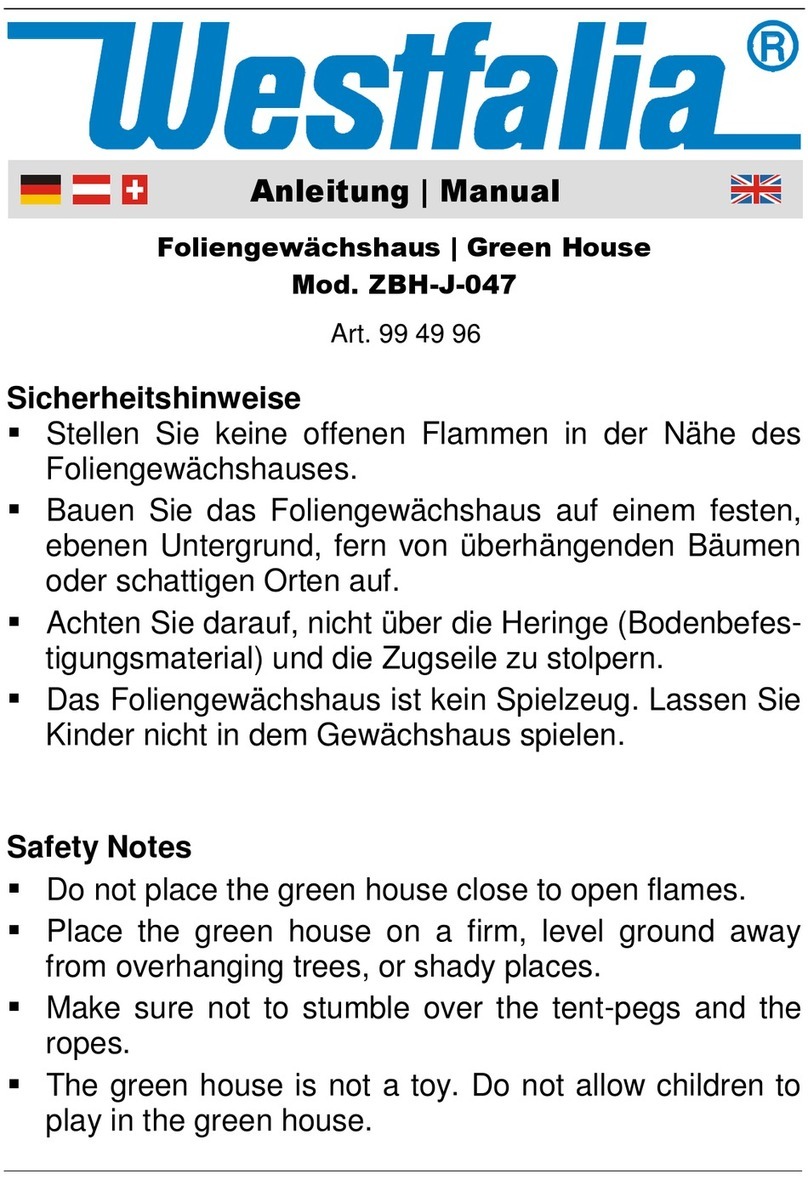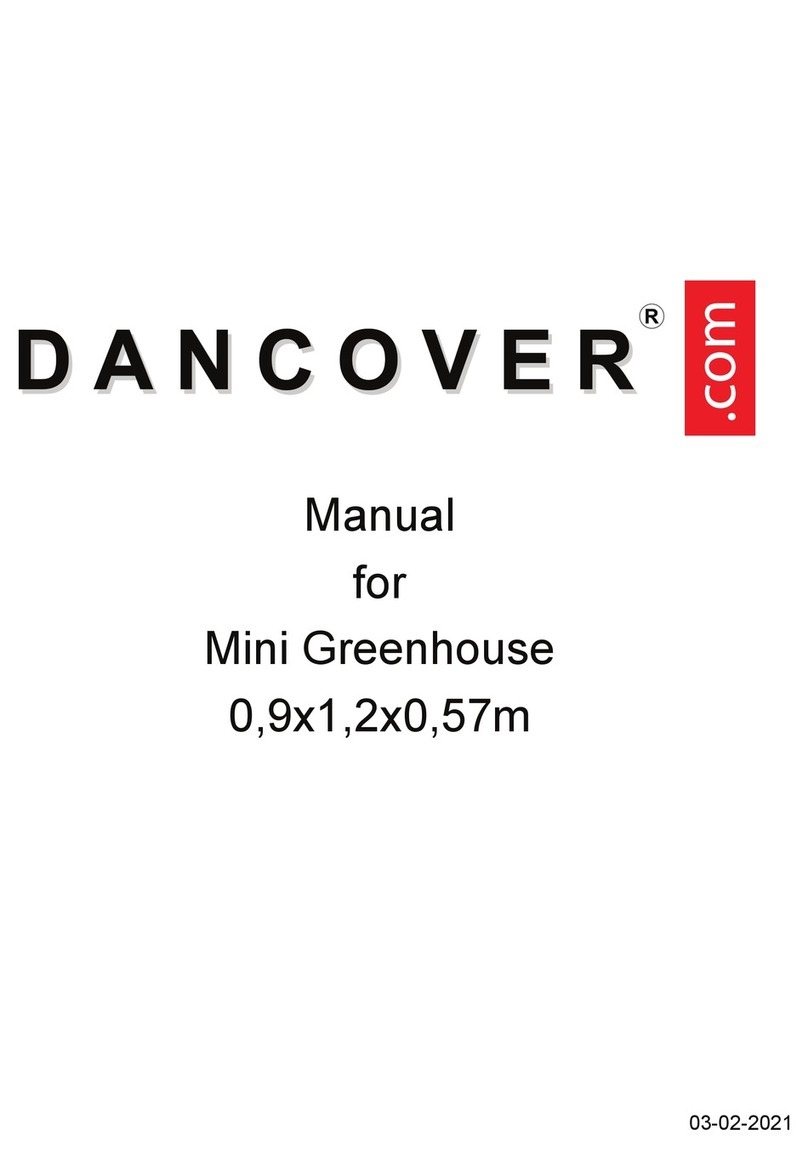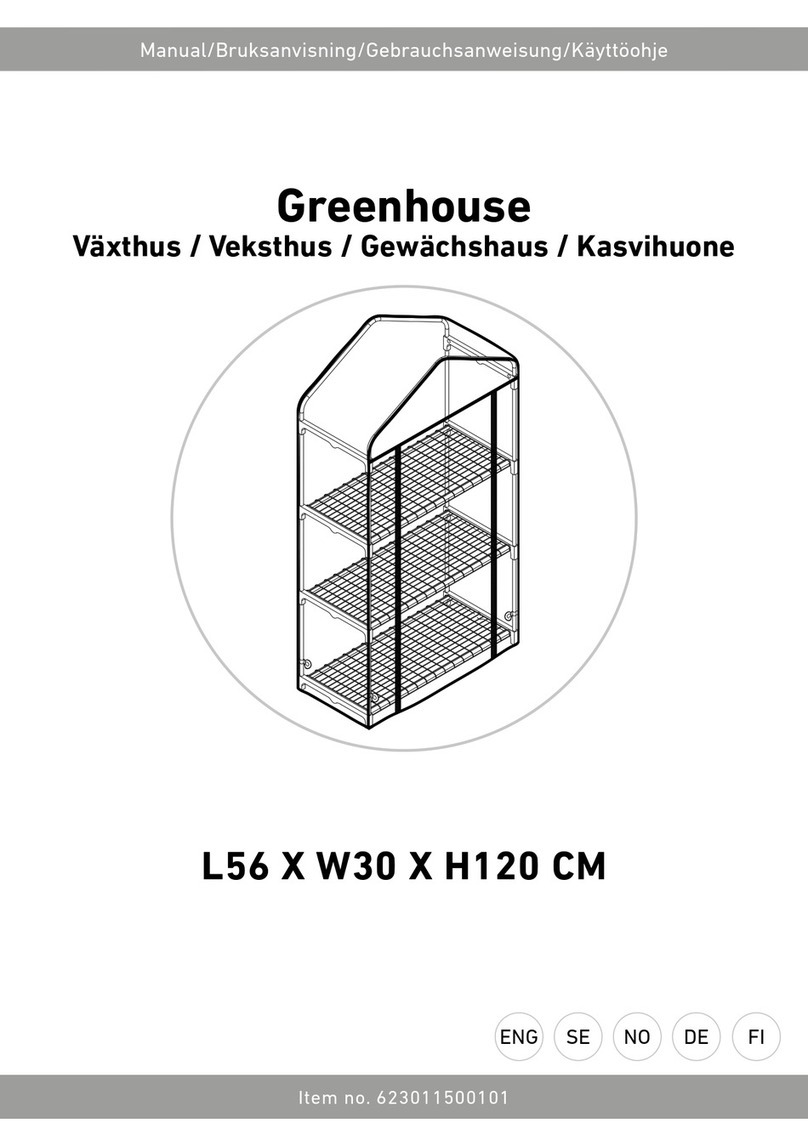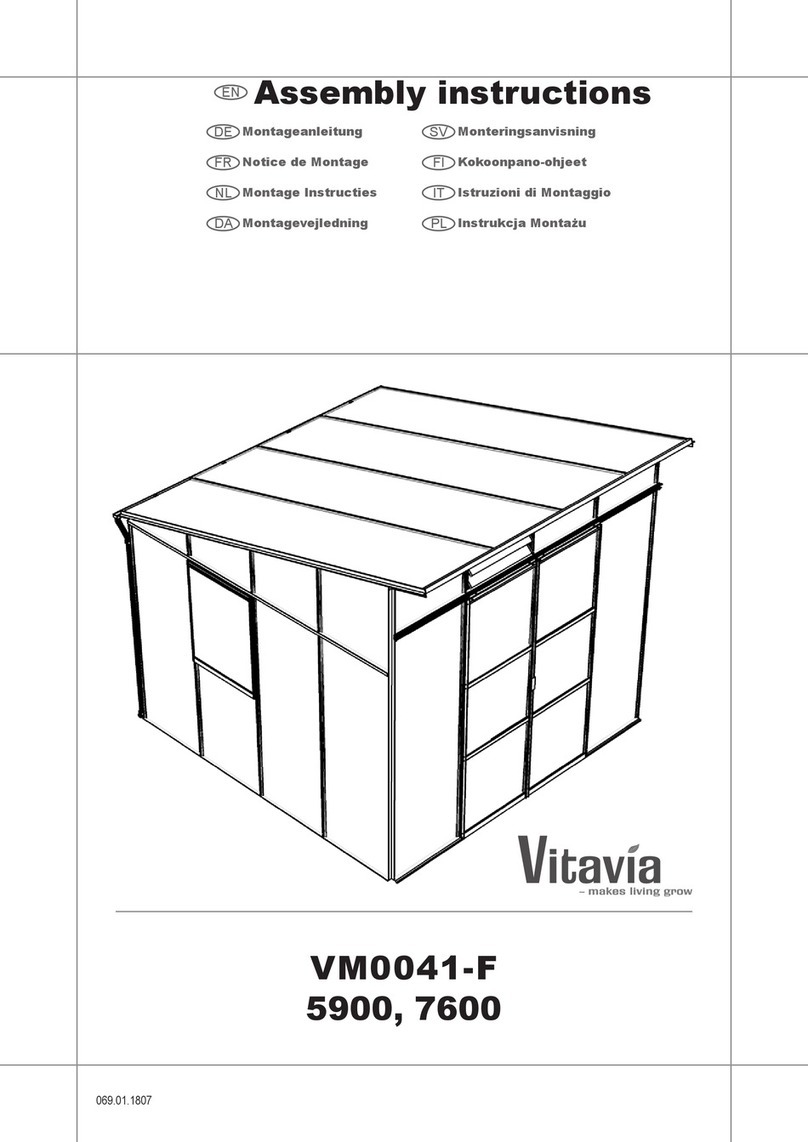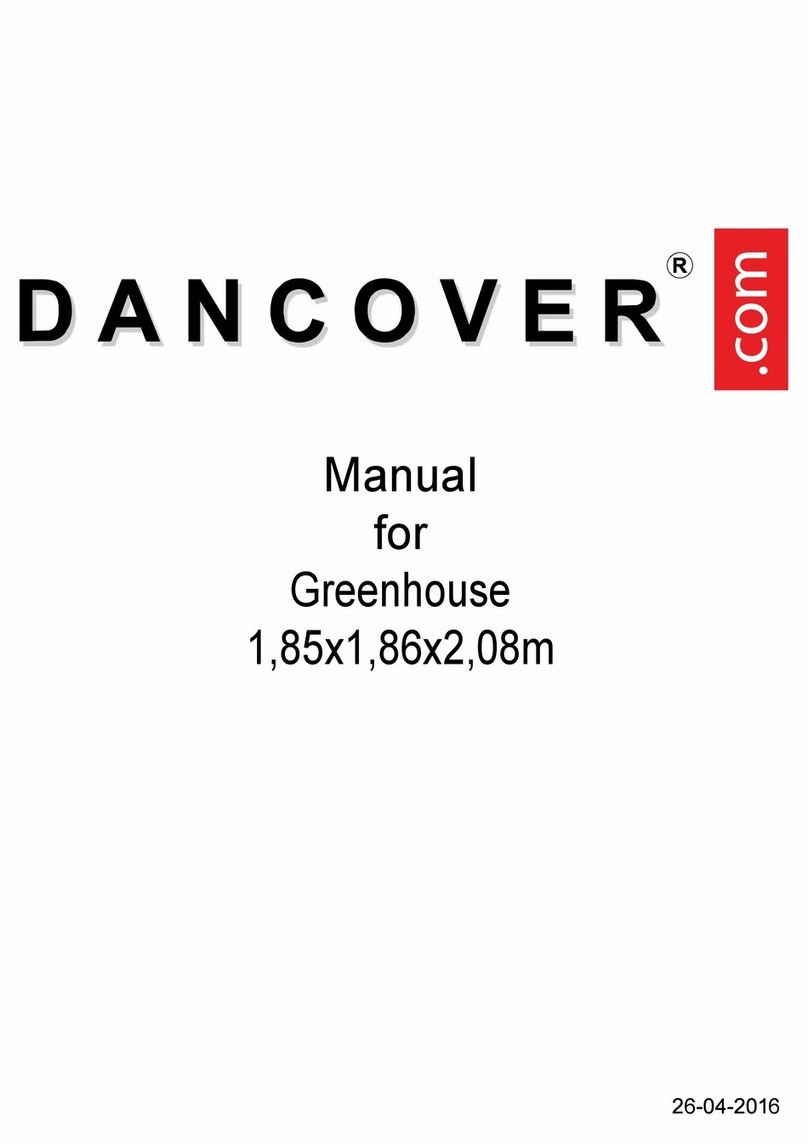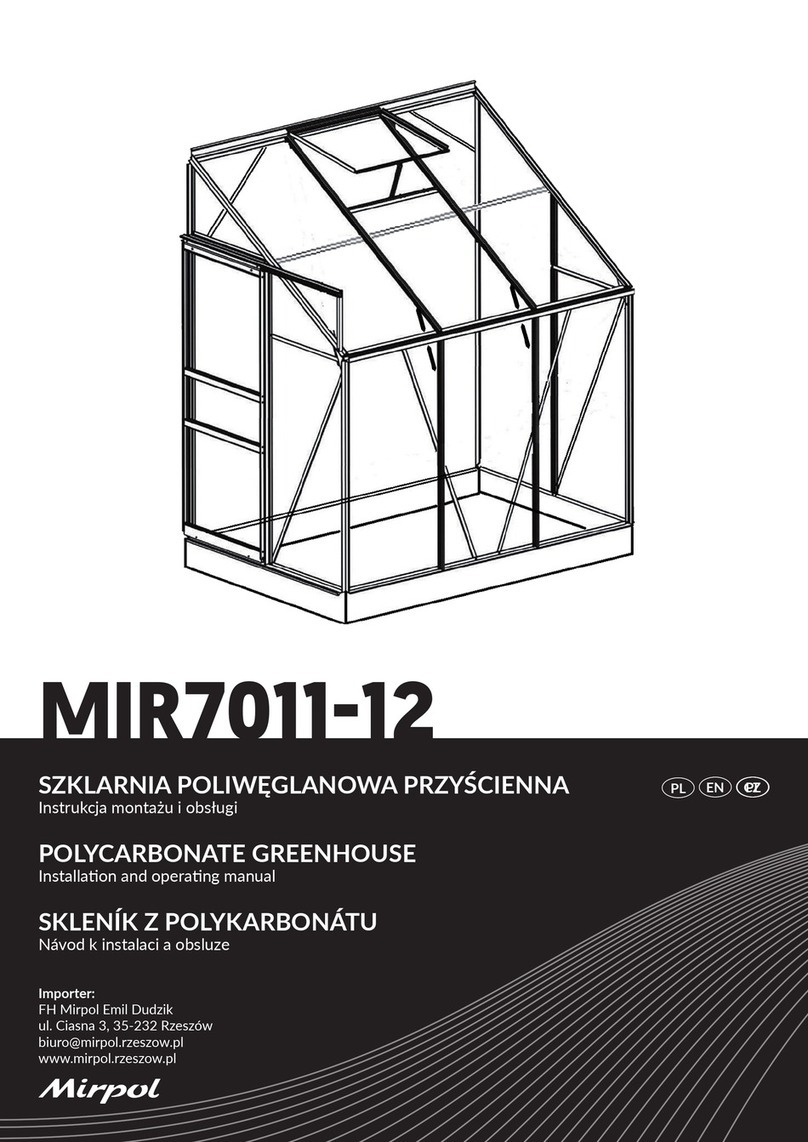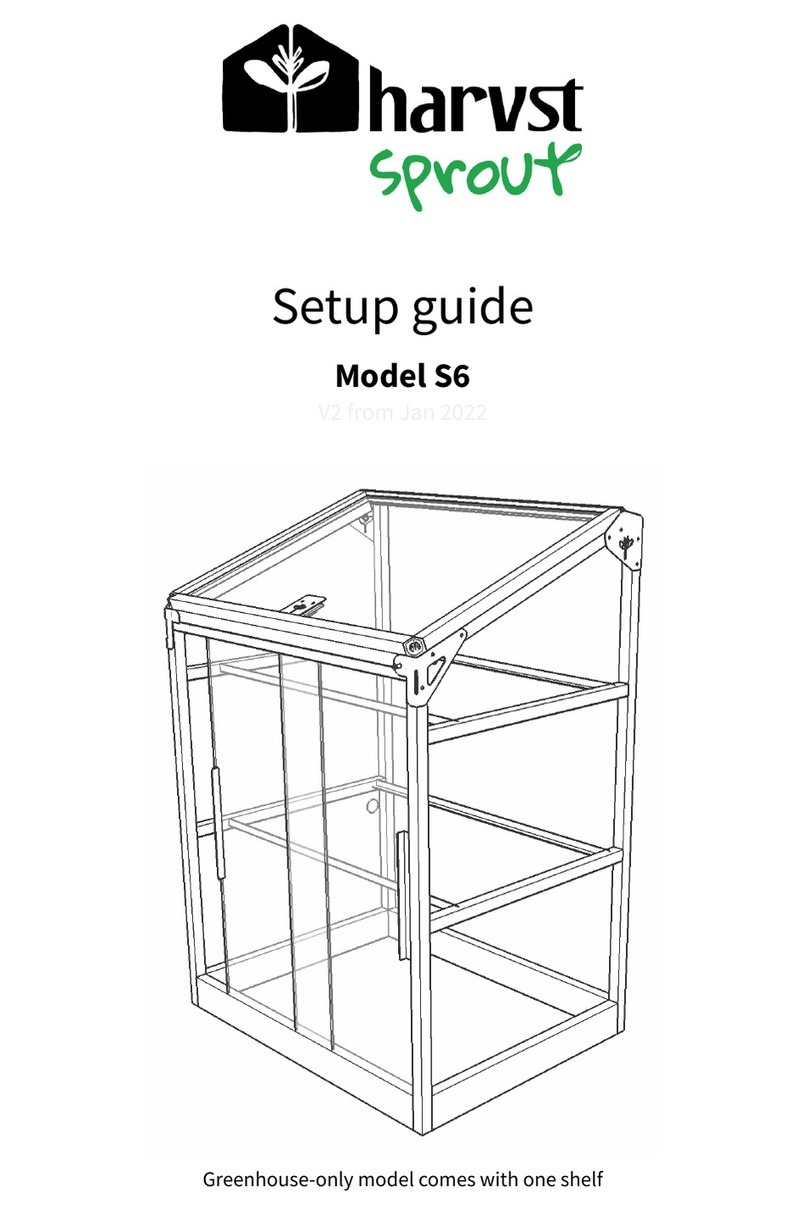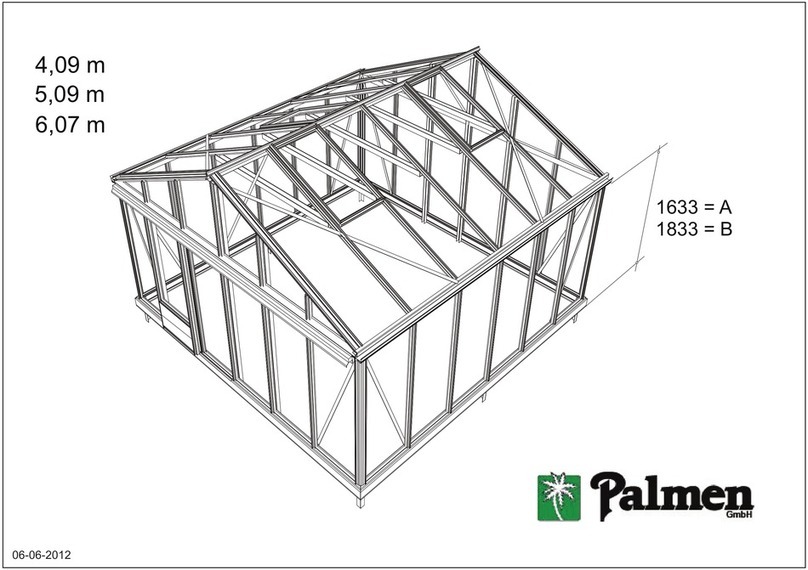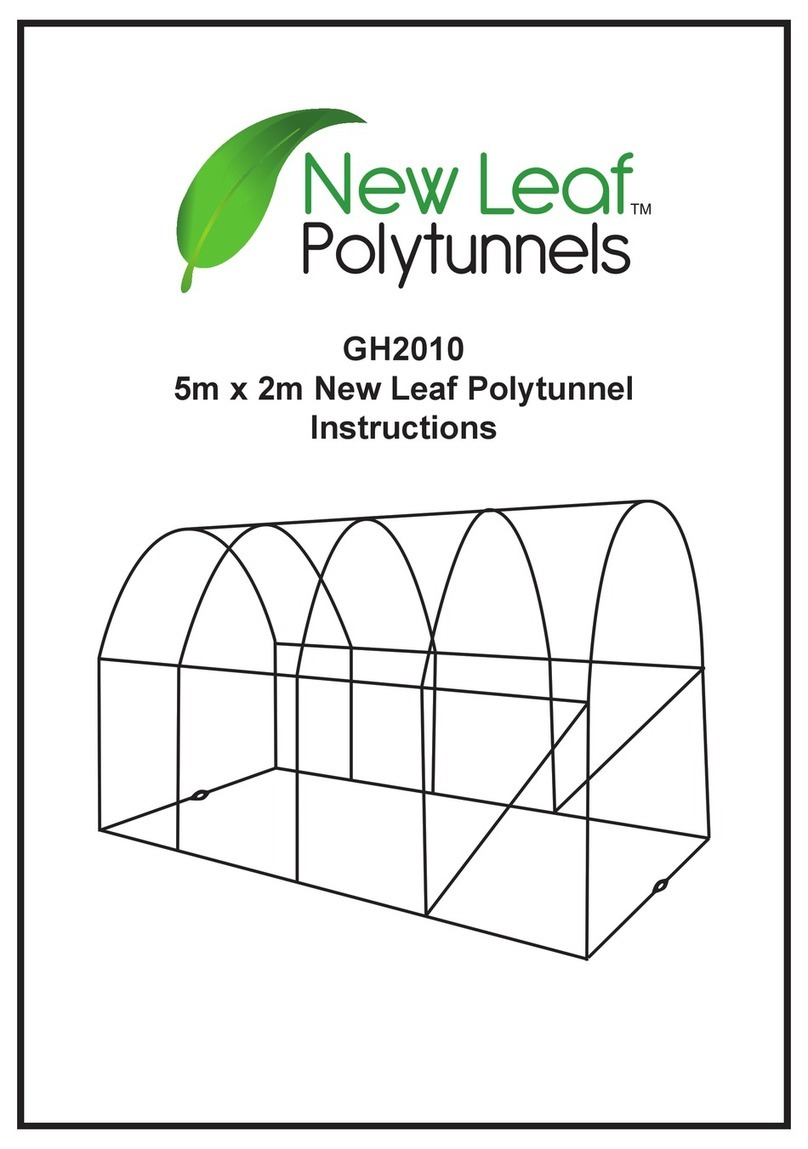
5. Before fitting the unhanded door post, offer the glass panels to the door (see glazing plan in
booklet for glass size guide on door), slide them in from the side. Carefully attach the unhand-
ed door post in the same way as before, ensuring the glass is sitting in the correct position
(sitting on the beading channels of the door posts) before tightening the screws.
6. Make sure all angles are square and tighten all screws. Now insert 2 glazing clips to the glass
on the unhanded door post.
The other side of the door is clipped using a pvc glass strip (or clip cap). Cut the strip to the
correct length and push into the cavity between the glass and the handed door post. The cap
when fitted acts as a wedge to prevent movement of the glass. Metal clips are not fitted to this
bar.
7. Fix each door wheel into position by pushing the bolt provided through the centre of the
wheel and then through the hole in the top door panel from underneath (i.e. from the inside of
the door). Put the washer over the bolt and secure with the nut provided, tightening until there
is no movement on the bolt. The nuts are lock-nuts and are harder to put on than normal nuts
in general assembly. The wheel will revolve freely because it has ball bearings in it. The
wheel has a collar protruding from the centre, this collar goes against the inside face of
the top door panel. (See picture below).
8. Slip the nylon door skids on each of the bottom panels. This may already have been done pri
or to delivery. After fitting the doors (see later in the booklet), you may need to lower the
door skid so that it engages with the bottom door cill to allow smooth movement of the door.
Lower the skid on each door and insert a self tapping screw at each end of the skid to rein
force the position.
9. Build the right hand door using the remaining handed and unhanded door post. Viewed from
the outside, the handed door post will be on the left of the door, while the unhanded door post
will be on the right. At this point you must decide the height you would like your door lock.
The hole to take the door lock is on the left hand side of the infill panel. You can decide to fit
this panel to the 2nd or 3rd panel down. Make sure you fit the glass before final fixing of
the door. See glazing plan towards the back of this booklet.
10. Thread the stainless steel backed brush extruder into the PVC carrier. This may already have
been done prior to delivery.
11. Turn the doors over and insert the black
brush draught excluder in the groove
(bolt slot) in the unhanded door posts.
Insert a nut and bolt at the bottom of
each unhanded door post and tighten so
that the brush will not slip down when
the door is in its upright position. Cut off
the surplus brush and carrier at the top of
the bar.
12. Do not fit the door to the gable at this
stage –wait until the structure is fully
assembled prior to glazing.
13. Door handles can now be fitted.




















